LAKE PLACID, N.Y. — In his eighth year skiing, retired Army veteran and double-leg amputee Andy Soule, of the U.S. Paralympics Nordic B-team, had been on a rollerski treadmill before — several times in fact: at the U.S. Ski Team headquarters in Park City, Utah, and at U.S. Biathlon’s base at the Olympic Training Center (OTC) in Lake Placid, N.Y., where he trained with fellow national-team members for a week earlier this month.
Straight off a training camp at Sweden’s Torsby ski tunnel in early September, Soule, A-team member Oksana Masters and C-teamer Aaron Pike all put their wheels on the OTC treadmill last week on Sept. 16. And while Soule, 34, was comfortable testing his double-pole technique in front of two coaches (John Farra and Eileen Carey), two physiologists (Jason Kask and Australia’s Sacha Fulton), and a visiting biomechanic from the Chula Vista OTC in California, Masters — who was born with multiple physical defects — had never been on a treadmill before.
“We’re starting from scratch,” Farra said to Masters, 25, as she watched herself rollerski on a video monitor at eye level in front of her. This was the first time the team had set up the treadmill with live-video capabilities, showing front and side views for the athlete to make tweaks or corrections on the fly.
“This is all new,” he said, reminding her to not overthink it. “Work on your V2.”
“What’s V2?” Masters asked as she playfully swung her poles behind her, alternating sides as if she was gliding to the left and right with each double pole.
“You were just doing it,” Carey said.
During each session, Soule, Masters and Pike all reached speeds around 10 miles per hour at about 10-percent incline. Each double poled for about 45 minutes, getting feedback from coaches, with Carey taking notes, Farra holding the safety rope, and both coaches asking how it felt.
The idea was to give the athletes ownership of their own progress — not just on the treadmill, but throughout offseason training. Farra said he got the treadmill-with-real-time-video idea from U.S. Ski Team member Noah Hoffman, who keeps a detailed training blog, and the U.S. Biathlon team, which uses it for that purpose in Lake Placid. As far as he knows, no other Para Nordic team in the world is doing that.
“Maybe one of our advantages is that we think that way,” Farra said. “I hope other Paralympic teams around the world aren’t thinking about all these little pieces and parts because we have a long ways to make up on Russia, who won most of the medals at the [Sochi] Paralympic Games. We’re not them, but I think we can run one of the most professional program in the world. That’s the goal: even if our results aren’t there yet, but if you do everything possible to run the single-best Paralympic program in the world, then that stuff will come, if you find the athletes and if they love it and if everything goes well.
“Andy Soule’s won a medal, so you could kind of go, oh well, he’s already won a medal, so why mess with his technique?” he added. “Well, because he can make two-, three-percent difference just by locking that down …”
Watch the video on YouTube here.
Alex Kochon
Alex Kochon (alexkochon@gmail.com) is a former FasterSkier editor and roving reporter who never really lost touch with the nordic scene. A freelance writer, editor, and outdoor-loving mom of two, she lives in northeastern New York and enjoys adventuring in the Adirondacks. She shares her passion for sports and recreation as the co-founder of "Ride On! Mountain Bike Trail Guide" and a sales and content contributor at Curated.com. When she's not skiing or chasing her kids around, Alex assists authors as a production and marketing coordinator for iPub Global Connection.

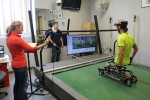
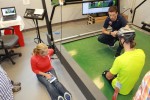
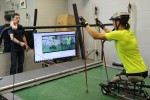
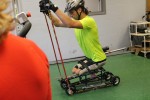
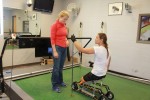
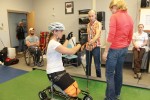
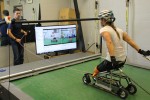
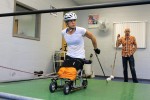
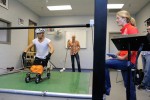
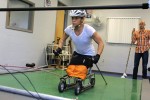
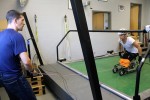
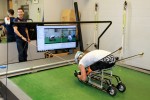
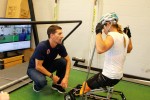
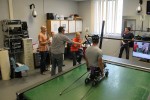
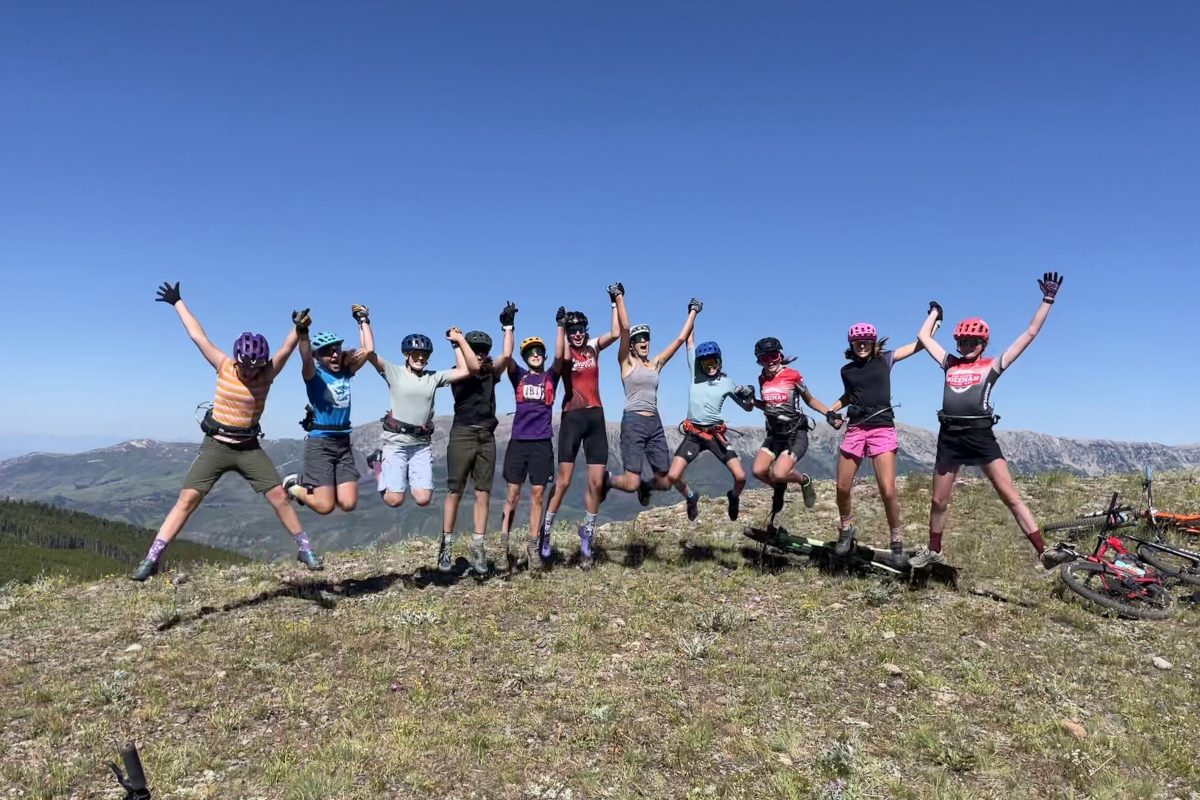
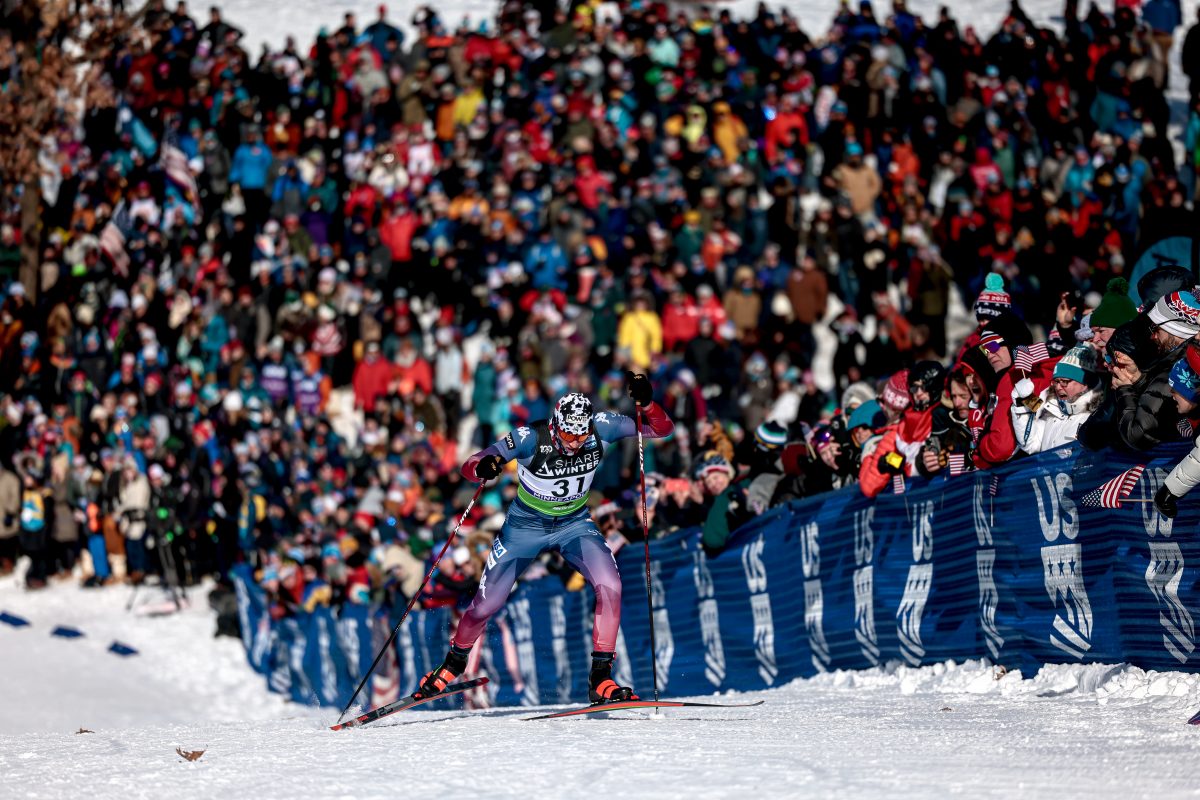

3 comments
Mark Vosburgh
September 26, 2014 at 4:46 pm
Nice article Alex. Andy and Oksana, a couple of the best Paralympic athletes in the world. We can be proud of them and the US para-nordic program!
gsmith
September 30, 2014 at 3:49 pm
Some interesting questions come to mind looking at the pictures and the video:
* From picture number 4 with the side view of Andy just before pole plant, his hands are quite high and both shoulders and elbows are a bit more extended than a standing skier typically has. This probably is driven by pole length. What are the trade offs for getting optimum pole length for a sit skier?
* The feedback videos have a short delay in playback so that the timing isn’t synced with the skier. Do they find this a bit disconcerting or distracting as feedback? (We’ve tried to solve this electronics problem for feedback with our treadmill but haven’t figured out how to get around it yet.)
Thoughts from anyone?
Gerald Smith
Colorado Mesa University
Alex Kochon
September 30, 2014 at 6:36 pm
Mr. Smith: Eileen Carey answered your questions via email:
“*Great question and one that we are trying to better answer through sessions like this. In short, many of the trade offs in short vs. long poles would be similar to a standing skier: longer poles offer a longer lever, and more power potential to a point. With any skier, that point is individual and variable and depends on strength, terrain, technique, physiology etc. For sit skiers those variables are in play but also the fact that being closer to the ground and having only upper body articulations (joints) to use, the movement patterns can be a little different and the power potential is limited by the necessarily shorter poles (compared to standing athletes). In addition, sit skiers with paraplegia have limited use of their core muscles, which generate a huge amount of power for a standing skier. This forces para sit skiers to innovate what aspects of standing technique work for them, and which do not. There is not one right way, and some sit skiers have very few examples to follow: those with injuries in the upper thoracic spine might only have 1 or 2 other high level athletes in the world to analyze for technique comparisons. One of our primary goals in getting on the treadmill was to connect what athletes feel and what we see as coaches, and link that with the power they are producing and physiologic impacts. This is the beginning of a process that we hope will be able to better answer your question and many other questions regarding technique and equipment choices.
*We utilized both immediate feedback and also feedback on delay. With a webcam, we were able to effectively get the immediate feedback. We used either immediate or delayed for different portions of our session depending on what we were trying to accomplish.”